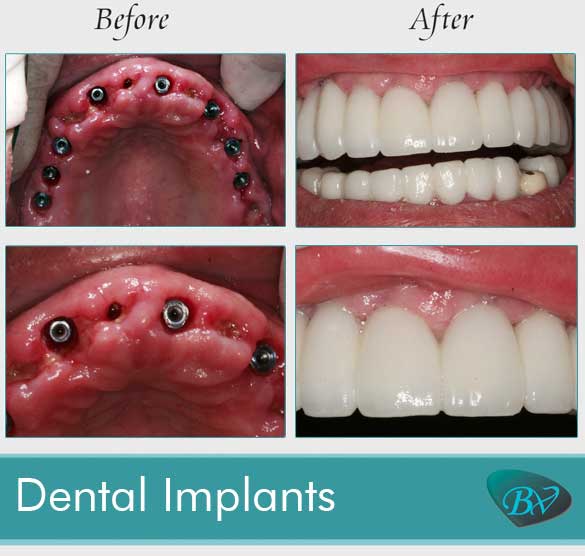Dental Sense Fundamentals Explained
Wiki Article
Some Known Details About Dental Sense
Table of ContentsThe Main Principles Of Dental Sense Dental Sense Can Be Fun For EveryoneSome Of Dental SenseSome Known Factual Statements About Dental Sense
are medical devices operatively dental implanted right into the jaw to restore a person's ability to chew or their appearance. They give assistance for synthetic (phony) teeth, such as crowns, bridges, or dentures. When a tooth is lost due to injury or condition, a person can experience issues such as fast bone loss, faulty speech, or changes to chewing patterns that result in pain.Dental dental implant systems consist of an oral implant body and oral implant abutment and might additionally include an abutment addiction screw. Root canal procedure. The dental implant body is surgically placed in the jawbone instead of the tooth's origin. The oral implant joint is generally connected to the dental implant body by the joint fixation screw and expands with gum tissues right into the mouth to support the connected artificial teeth
(http://peterjackson.mee.nu/where_i_work#c2504)Framework of The Oral Implant System choosing oral implants, talk to your dental provider concerning the potential advantages and dangers, and whether you are a prospect for the treatment. Things to take into consideration: Your total wellness is an essential element in establishing whether you are a good candidate for oral implants, for how long it will take to recover, and exactly how long the implant might remain in location.
Smoking cigarettes might impact the recovery process and decrease the long-lasting success of the implant. The recovery procedure for the dental implant body might take a number of months or longer, during which time you typically have a short-lived abutment in place of the tooth. the dental implant procedure: Meticulously adhere to the oral health directions provided to you by your dental provider.
The Dental Sense Diaries
Implant failing can lead to the demand for an additional surgery to repair or change the implant system. Restores the capacity to chew Brings back cosmetic appearance Aids keep the jawbone from shrinking due to bone loss Maintains the wellness of the bordering bone and periodontals Assists keep adjacent (nearby) teeth steady Boosts quality of life Damages to bordering natural teeth during implant positioning Injury to the surrounding cells throughout surgical procedure, such as sinus perforation Injury throughout surgery (for instance, fracture of surrounding jawbone) Inadequate function, such as feeling like the teeth do not attack together typically An experience that the tooth hangs or twisting in position resulting from a joint screw loosening Implant body failure (looseness of the dental implant body) due to systemic infection, which might be most likely in clients with unchecked diabetics issues because of neighborhood infection in bone and gum find more tissues sustaining the implant body because of postponed recovery, which might be much more likely in patients that smoke Difficulty cleaning up the gums around the implant, causing bad dental hygiene Neglected periodontal condition Post-surgical pins and needles as a result of nerve impingement or damage Constantly alert wellness care suppliers and imaging technicians that you have oral implants before any magnetic vibration imaging (MRI) or x-ray treatments.FDA is not conscious of any type of damaging events reported for MRI or x-ray treatments with oral implants. Oral implants systems are normally constructed from materials that adhere to worldwide consensus criteria of the International Company for Standardization (ISO) or ASTM International. These standards have details of what makes a risk-free product.

An oral implant is a structure that changes a missing out on tooth. With screw-like devices, the surgeon inserts a dental implant right into the jawbone, and it serves as a support for an artificial tooth, called a crown. A tool called an abutment links the artificial tooth to the dental implant. The crown is customized to fit the person's mouth and match the color of their teeth.
See This Report on Dental Sense
Some people are not eligible for oral implant surgical treatment. It is for dental specialists to operate people with: intense illnessuncontrollable metabolic diseasebone or soft tissue illness or infectionIf these concerns are fixed, an individual can have the surgical procedure. In, dental specialists avoid running on individuals with: If people with any one of the above undergo oral implant surgical procedure, there is a higher risk of the implant stopping working.
Oral implant surgical treatment is a personalized process. Give you time to recover. Attach the message and final crown, bridge or denture.
Next off, your doctor will meticulously place the oral implant right into your jaw. If your dental implant is near the front of your mouth, your dentist will certainly make a temporary tooth for you to use till you heal.
Our Dental Sense Diaries
Throughout the recovery stage, your jawbone ought to fuse to the dental implant. This procedure can take anywhere from three to nine months.As soon as your implant heals, your dental expert can affix the joint (tiny connector article) and your final remediation (crown, bridge or denture). This usually takes regarding one hour to finish and might require a second small surgery. You should not feel any pain throughout your oral implant treatment because your provider will make use of medicine to numb your periodontals.
Report this wiki page